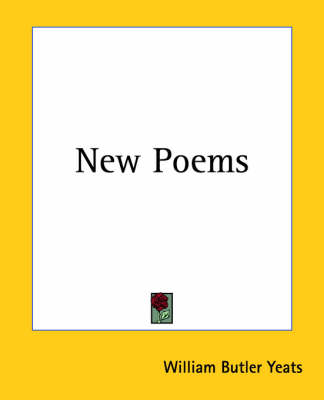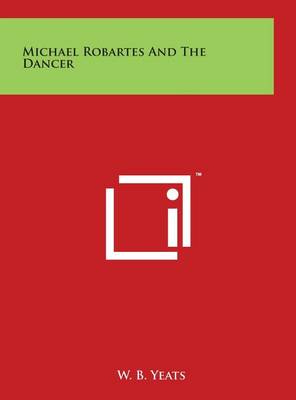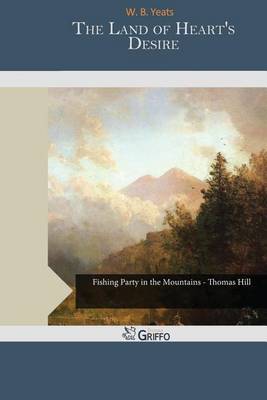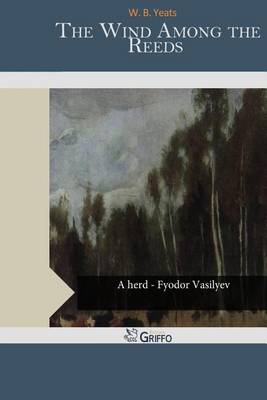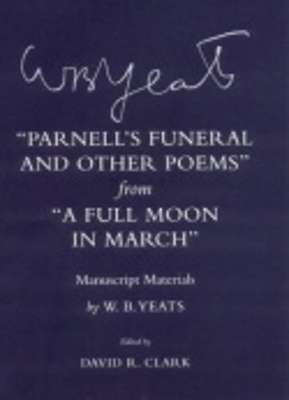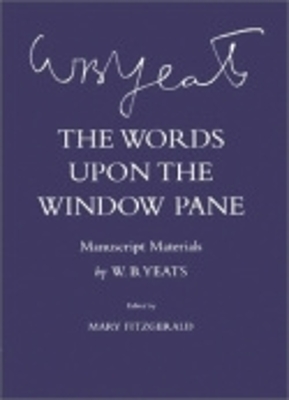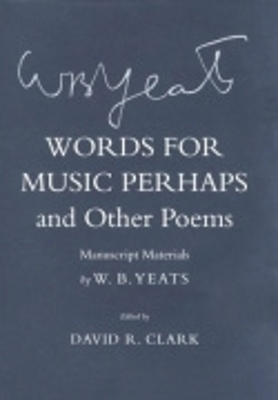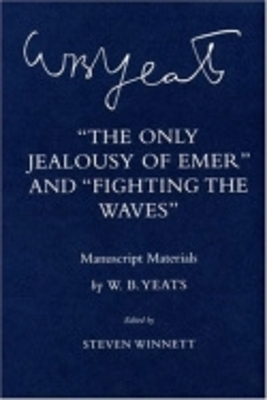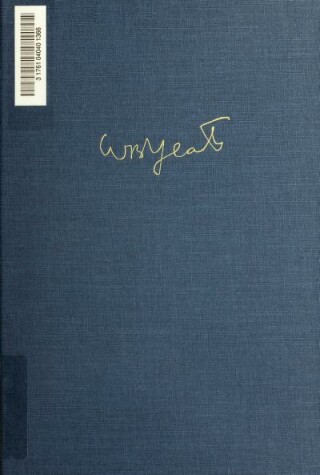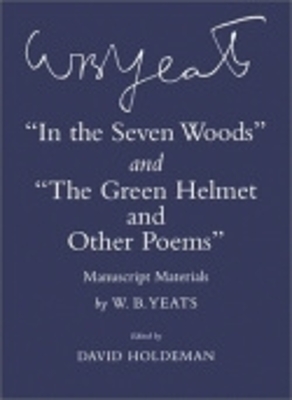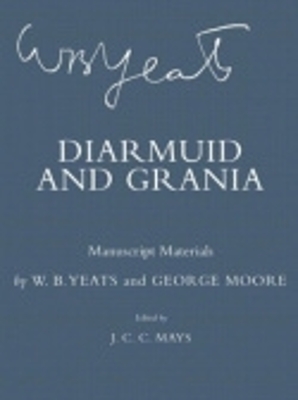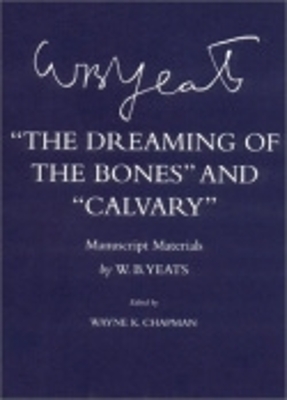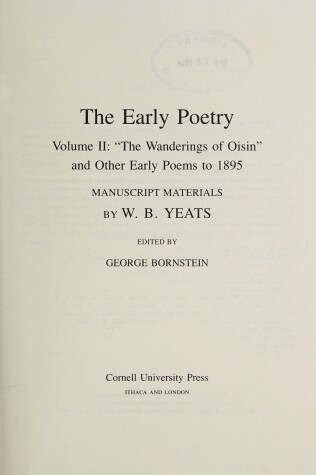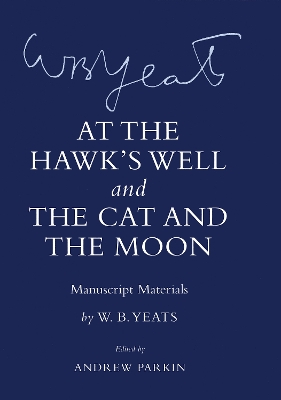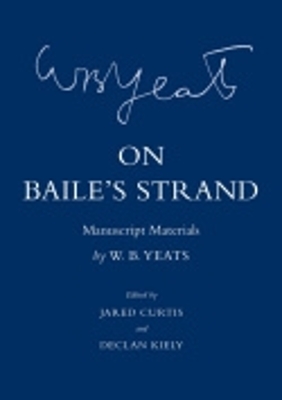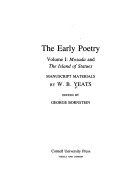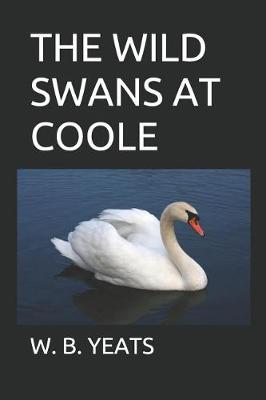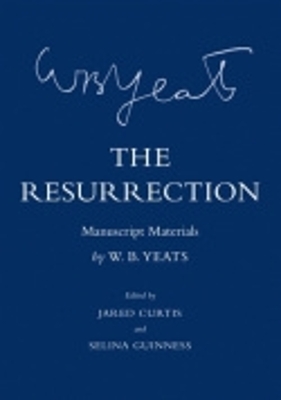The Cornell Yeats
33 total works
From reviews of The Cornell Yeats series:
"For students of Yeats the whole series is bound to become an essential reference source and a stimulus to important critical re-readings of Yeats's major works. In a wider context, the series will also provide an extraordinary and perhaps unique insight into the creative process of a great artists."-Irish Literary Supplement
"I consider the Cornell Yeats one of the most important scholarly projects of our time."-A. Walton Litz, Princeton University, coeditor of The Collected Poems of William Carols Williams and Personae: The Shorter Poems of Ezra Pound
"The most ambitious of the many important projects in current studies of Yeats and perhaps of modern poetry generally.... The list of both general and series editors, as well as prospective preparers of individual volumes, reads like a Who's Who of Yeats textual studies in North America. Further, the project carries the blessing of Yeats's heirs and bespeaks an ongoing commitment from a major university press.... The series will inevitably engender critical studies based on a more solid footing than those of any other modern poet.... Its volumes will be consulted long after gyres of currently fashionable theory have run on."-Yeats Annual (1983)
New Poems, the last book that Yeats published in his lifetime, contains 35 poems, including "Lapis Lazuli," "The Municipal Gallery Re-visited," and "The Gyres." It is a volume in which Yeats attempted to make a fresh beginning. In language fueled by rage and frustration, the poems in this collection traverse emotions stimulated by Yeats's feelings toward women, his travels to Majorca, and political ideas inspired or provoked by Charles Parnell, Roger Casement, and Oliver Cromwell. "New Poems," write the editors, "has the newness of discovery in a vortex of exhaustion, desire, and calculation.... The sense of a renewal in the eighth decade of Yeats's life was precarious and, when it came, especially poignant."
The materials gathered here reveal the process by which Yeats wrote individual poems, established relations among them, and considered their possible placement in the collection. Photographs of drafts, stanzas floating within-but not trapped by-the margins of loose-leaf pages, in Yeats's characteristically illegible hand, are accompanied by the editors' transcriptions. Four appendixes contain an illustration for New Poems, Yeats's draft of the volume's table of contents, a poem written in collaboration between Yeats and Dorothy Wellesley, and three unpublished ballads.
From reviews of The Cornell Yeats series:
"For students of Yeats the whole series is bound to become an essential reference source and a stimulus to important critical re-readings of Yeats's major works. In a wider context, the series will also provide an extraordinary and perhaps unique insight into the creative process of a great artists."-Irish Literary Supplement
"I consider the Cornell Yeats one of the most important scholarly projects of our time."-A. Walton Litz, Princeton University, coeditor of The Collected Poems of William Carols Williams and Personae: The Shorter Poems of Ezra Pound
"The most ambitious of the many important projects in current studies of Yeats and perhaps of modern poetry generally.... The list of both general and series editors, as well as prospective preparers of individual volumes, reads like a Who's Who of Yeats textual studies in North America. Further, the project carries the blessing of Yeats's heirs and bespeaks an ongoing commitment from a major university press.... The series will inevitably engender critical studies based on a more solid footing than those of any other modern poet.... Its volumes will be consulted long after gyres of currently fashionable theory have run on."-Yeats Annual (1983)
Published during the blossoming of Yeats's maturity, between The Wild Swans at Coole (1919) and The Tower (1928), Michael Robartes and the Dancer (1920) includes poems that confronted central political, personal, and philosophic issues. This volume presents all the extant manuscripts for the poems in the collection, which Yeats wrote between 1914 and 1919.
From reviews of The Cornell Yeats series:
"For students of Yeats the whole series is bound to become an essential reference source and a stimulus to important critical re-readings of Yeats's major works. In a wider context, the series will also provide an extraordinary and perhaps unique insight into the creative process of a great artists."-Irish Literary Supplement
"I consider the Cornell Yeats one of the most important scholarly projects of our time."-A. Walton Litz, Princeton University, coeditor of The Collected Poems of William Carols Williams and Personae: The Shorter Poems of Ezra Pound
"The most ambitious of the many important projects in current studies of Yeats and perhaps of modern poetry generally.... The list of both general and series editors, as well as prospective preparers of individual volumes, reads like a Who's Who of Yeats textual studies in North America. Further, the project carries the blessing of Yeats's heirs and bespeaks an ongoing commitment from a major university press.... The series will inevitably engender critical studies based on a more solid footing than those of any other modern poet.... Its volumes will be consulted long after gyres of currently fashionable theory have run on."-Yeats Annual (1983)
The Land of Heart's Desire, staged at the Avenue Theatre in London in 1894, marks W. B. Yeats's first use of Irish folklore in a play produced in the commercial theater, with important consequences for his career as a dramatist. This book includes transcriptions and photographs of the surviving holograph manuscripts of the play, reproductions of Yeats's own notes and revisions, and other materials related to stage productions and the resulting changes he made to the text.
After Maud Gonne refused his offer of marriage in the summer of 1893, Yeats coped with his disappointment by burying himself in work. He composed a number of poems based on Irish folklore that would not see publication until 1899 and took steps to shape a literary renaissance in Ireland. In many of the pieces he wrote at this time, he developed the idea, sustained and refined throughout his life, that folklore was the foundation of a living mythology.
"Parnell's Funeral and Other Poems" from "A Full Moon in March"
by W. B. Yeats
The manuscripts transcribed and reproduced in this volume of the Cornell Yeats were written from spring 1933 through December 1934. "Parnell's Funeral and Other Poems" is the third section of W. B. Yeats's book A Full Moon in March (1935), following the two plays A Full Moon in March and The King of the Great Clock Tower.
David R. Clark's introduction relates biographical events to what the manuscripts show about the chronological order in which the poems were written. The poems, which illuminate such facets of Yeats's life as the poet's flirtations with fascism and Hinduism and his concern, at age sixty-eight, that his poetic powers were waning, are presented in the order in which they appeared in A Full Moon in March.
Of the twenty-one poems here, eighteen are called songs. Only "Parnell's Funeral" itself is un-songlike, a somber and powerful declaration made by a Parnellite. Each poem is accompanied by comments on its content and its manuscripts. Ninety-nine illustrations show Yeats's handwritten drafts, typescripts, and revisions. Because of the poems' exotic references, a long section of the introduction provides relevant material from Yeats's letters and commentary and an independent analysis of each poem. Early in his career Yeats, with his fellow poets in the Rymers' Club, had "taken delight in poetry that was, before all else, speech or song, and could hold the attention of a fitting audience like a good play or a good conversation." Throughout "Parnell's Funeral and Other Poems," Yeats's desire for a direct lyrical urge is evident.
From reviews of The Cornell Yeats series:
"For students of Yeats the whole series is bound to become an essential reference source and a stimulus to important critical re-readings of Yeats's major works. In a wider context, the series will also provide an extraordinary and perhaps unique insight into the creative process of a great artists."—Irish Literary Supplement
"I consider the Cornell Yeats one of the most important scholarly projects of our time."—A. Walton Litz, Princeton University, coeditor of The Collected Poems of William Carols Williams and Personae: The Shorter Poems of Ezra Pound
"The most ambitious of the many important projects in current studies of Yeats and perhaps of modern poetry generally.... The list of both general and series editors, as well as prospective preparers of individual volumes, reads like a Who's Who of Yeats textual studies in North America. Further, the project carries the blessing of Yeats's heirs and bespeaks an ongoing commitment from a major university press.... The series will inevitably engender critical studies based on a more solid footing than those of any other modern poet.... Its volumes will be consulted long after gyres of currently fashionable theory have run on."—Yeats Annual (1983)
Words upon the Window Pane, first staged in 1930, is W. B. Yeats's most powerful and brilliant dramatic exploration of the occult, in which he had a lifelong interest, and an affirmation of Anglo-Irish Protestant cultural ascendancy. Written at Lady Gregory's Coole Park estate, it features a séance in which Jonathan Swift's voice is projected through a medium. Like Yeats, Swift was both politician and poet, and taking Swift as his subject allowed Yeats to cloak a political message under personal character.
Quite probably based on an obscure one-act play called Swift and Stella by Charles Edward Lawrence, Lady Gregory's editor, the play is centered on a romantic triangle involving Jonathan Swift and two women, Vanessa and Stella. Yeats's use of a séance as a frame permits him to compare the present with the past by putting twentieth-century Dubliners side by side with Swift's contemporaries.
This volume of the Cornell Yeats contains transcriptions and photographic reproductions of the drafts of Words upon the Window Pane, with variant readings from proofs, typescripts, and notebook entries, as well as other materials pertaining to its writing, publication, and performance.
From reviews of The Cornell Yeats series:
"For students of Yeats the whole series is bound to become an essential reference source and a stimulus to important critical re-readings of Yeats's major works. In a wider context, the series will also provide an extraordinary and perhaps unique insight into the creative process of a great artists."-Irish Literary Supplement
"I consider the Cornell Yeats one of the most important scholarly projects of our time."-A. Walton Litz, Princeton University, coeditor of The Collected Poems of William Carols Williams and Personae: The Shorter Poems of Ezra Pound
"The most ambitious of the many important projects in current studies of Yeats and perhaps of modern poetry generally.... The list of both general and series editors, as well as prospective preparers of individual volumes, reads like a Who's Who of Yeats textual studies in North America. Further, the project carries the blessing of Yeats's heirs and bespeaks an ongoing commitment from a major university press.... The series will inevitably engender critical studies based on a more solid footing than those of any other modern poet.... Its volumes will be consulted long after gyres of currently fashionable theory have run on."-Yeats Annual (1983)
Words for Music Perhaps and Other Poems (1932) has been called W. B. Yeats's finest single volume. It features not only the great series for which it is named-a series that includes the Crazy Jane poems-but also single poems such as "Byzantium" and "Coole Park, 1929." This edition records every draft, from Yeats's first notion to the published version, a majority both in facsimile (in Yeats's fiercely illegible hand) and in faithful transcription on facing pages. A census of manuscripts identifies the source among Yeats's papers of each draft, and appendices trace the writing of the poems through notebooks, loose manuscripts, and galley proofs with Yeats's corrections and copious additions.
This volume contains all the manuscripts of "Crazy Jane Talks with the Bishop,"-a poem added in The Winding Stair and Other Poems (1933). It also includes drafts of the unpublished "Crazy Jane and the King," completing the presentation of the Crazy Jane poems.
The Cornell Yeats edition of The Winding Stair (1929) and the present volume together provide all the poems that were gathered to make The Winding Stair and Other Poems (1933), Yeats's great "counter-truth" and companion volume to The Tower (1928).
Yeats is a poet as much of fact as of feeling. Every work of his has a source—whether from folklore, legend, mythology, the occult, or history: each a source that for him had a definite objective reality. The demands of this world and of that other world of Yeatsian spiritual reality often conflict. His verse play The Only Jealousy of Emer, particularly in its early drafts, offers a vivid portrayal of such a struggle. Premiering in 1922 in Amsterdam and first staged in Ireland at the Abbey Theatre in 1926, it marked one of the turning points of Yeats's career, because in its final form it is a synthesis of two profound experiences that were to shape his later work: his marriage to Georgie Hyde-Lees in 1917 brought him a certain degree of contentment with the joys of this world, while her automatic script provided a philosophical framework for his poems and plays.
Fighting the Waves—a prose version of The Only Jealousy of Emer staged at the Abbey Theatre in 1929 and revived in London in 1930, but never performed again—is an integral part of the history of Yeats's composition and revision of The Only Jealousy of Emer, and its manuscript drafts are therefore included in this volume as part of the direct sequence of the composition of The Only Jealousy of Emer, even though Yeats himself ultimately considered Fighting the Waves a lesser work.
From reviews of The Cornell Yeats series:
"For students of Yeats the whole series is bound to become an essential reference source and a stimulus to important critical re-readings of Yeats's major works. In a wider context, the series will also provide an extraordinary and perhaps unique insight into the creative process of a great artists."—Irish Literary Supplement
"I consider the Cornell Yeats one of the most important scholarly projects of our time."—A. Walton Litz, Princeton University, coeditor of The Collected Poems of William Carols Williams and Personae: The Shorter Poems of Ezra Pound
"The most ambitious of the many important projects in current studies of Yeats and perhaps of modern poetry generally.... The list of both general and series editors, as well as prospective preparers of individual volumes, reads like a Who's Who of Yeats textual studies in North America. Further, the project carries the blessing of Yeats's heirs and bespeaks an ongoing commitment from a major university press.... The series will inevitably engender critical studies based on a more solid footing than those of any other modern poet.... Its volumes will be consulted long after gyres of currently fashionable theory have run on."—Yeats Annual (1983)
This volume brings together all extant manuscripts of The Hour-Glass, from a handwritten three-page fragment of the 1902 prose version to Yeats's typescripts of the 1922 verse rendition.
Based on a folktale called "The Priest's Soul," which Yeats first encountered in 1888, The Hour-Glass was written as both a play in prose and a drama in verse over the course of more than thirty years. This volume brings together all extant manuscripts of The Hour-Glass, from a handwritten three-page fragment of the 1902 prose version to Yeats's typescripts of the 1922 verse rendition.
This volume presents the surviving manuscripts, typescripts, and early printed texts for all of the poems W. B. Yeats included at one time or another in two remarkably significant and protean collections: In the Seven Woods, first published in 1903, and The Green Helmet and Other Poems, first published in 1910. It also documents the extant early record for seven poems Yeats wrote between 1899 and 1914 but either never published or never attached to one of his plays or collections of poems.
During this crucial period in his career, Yeats transformed himself from a talented late-Victorian aesthete to a major modernist poet. The photographs and transcriptions provided here reveal much about how this remarkable change occurred. They are accompanied by ample supporting materials, including a descriptive bibliography of the manuscripts and an extensive critical introduction.
From reviews of The Cornell Yeats series:
"For students of Yeats the whole series is bound to become an essential reference source and a stimulus to important critical re-readings of Yeats's major works. In a wider context, the series will also provide an extraordinary and perhaps unique insight into the creative process of a great artist."—Irish Literary Supplement
"I consider the Cornell Yeats one of the most important scholarly projects of our time."—A. Walton Litz, Princeton University, coeditor of The Collected Poems of William Carols Williams and Personae: The Shorter Poems of Ezra Pound
"The most ambitious of the many important projects in current studies of Yeats and perhaps of modern poetry generally.... The list of both general and series editors, as well as prospective preparers of individual volumes, reads like a Who's Who of Yeats textual studies in North America. Further, the project carries the blessing of Yeats's heirs and bespeaks an ongoing commitment from a major university press.... The series will inevitably engender critical studies based on a more solid footing than those of any other modern poet.... Its volumes will be consulted long after gyres of currently fashionable theory have run on."—Yeats Annual (1983)
George Moore involved W. B. Yeats personally in the revision of a novel of Moore's that contained a character based on Yeats; this involvement led to the pair's collaboration in writing a play based on Diarmuid and Grania, one of the best-known tragic tales of Celtic mythology. At the late stages of composition, the authors decided to add songs, and Edward Elgar provided the music. The play opened at the Gaiety Theatre in Dublin on October 21, 1901. Although the collaboration had been difficult—Yeats and Moore disagreed frequently, mainly about style—the production was well received. Controversy arose, however, because English actors played these most Irish of characters. After the play was produced, Yeats, whose commitment had occasionally seemed to waver, defended it against all criticism.
The manuscript materials included in the Cornell Yeats edition of Diarmuid and Grania provide a full record of the disputes and revisions that culminated in the final draft. In his Introduction, J. C. C. Mays writes, "If one looks beyond words or passages that can be tagged with an author's name and a specific date, one can see signatures of each author no less clearly than such tags afford and perhaps see each writer more pervasively inhabiting the characters and situations of the play."
From reviews of The Cornell Yeats series:
"For students of Yeats the whole series is bound to become an essential reference source and a stimulus to important critical re-readings of Yeats's major works. In a wider context, the series will also provide an extraordinary and perhaps unique insight into the creative process of a great artists."—Irish Literary Supplement
"I consider the Cornell Yeats one of the most important scholarly projects of our time."—A. Walton Litz, Princeton University, coeditor of The Collected Poems of William Carols Williams and Personae: The Shorter Poems of Ezra Pound
"The most ambitious of the many important projects in current studies of Yeats and perhaps of modern poetry generally.... The list of both general and series editors, as well as prospective preparers of individual volumes, reads like a Who's Who of Yeats textual studies in North America. Further, the project carries the blessing of Yeats's heirs and bespeaks an ongoing commitment from a major university press.... The series will inevitably engender critical studies based on a more solid footing than those of any other modern poet.... Its volumes will be consulted long after gyres of currently fashionable theory have run on."—Yeats Annual (1983)
The second and last of a series of four adaptations from the Japanese Noh theater, "The Dreaming of the Bones" and "Calvary" were paired in their first printing together in "Four Plays for Dancers." In writing these one-act plays, Yeats worked through for himself the psychology of betrayal and its consequences for humanity. This book reproduces the complete set of extant manuscripts that preceded publication of both plays. In addition to a perceptive introductory essay, the book includes several appendixes of Yeats's notes and commentaries on the plays from their preparation in 1921 onward.
The Early Poetry, Volume II—"The Wanderings of Oisin" and Other Poems to 1895
by W. B. Yeats
From reviews of The Cornell Yeats series:
"For students of Yeats the whole series is bound to become an essential reference source and a stimulus to important critical re-readings of Yeats's major works. In a wider context, the series will also provide an extraordinary and perhaps unique insight into the creative process of a great artists."—Irish Literary Supplement
"I consider the Cornell Yeats one of the most important scholarly projects of our time."—A. Walton Litz, Princeton University, coeditor of The Collected Poems of William Carols Williams and Personae: The Shorter Poems of Ezra Pound
"The most ambitious of the many important projects in current studies of Yeats and perhaps of modern poetry generally.... The list of both general and series editors, as well as prospective preparers of individual volumes, reads like a Who's Who of Yeats textual studies in North America. Further, the project carries the blessing of Yeats's heirs and bespeaks an ongoing commitment from a major university press.... The series will inevitably engender critical studies based on a more solid footing than those of any other modern poet.... Its volumes will be consulted long after gyres of currently fashionable theory have run on."—Yeats Annual (1983)
This is the second of two volumes containing transcriptions and in many cases facsimiles of all surviving manuscripts of the poetry that Yeats had published by 1895, together with the later revisions of that poetry.
From reviews of The Cornell Yeats series:
"For students of Yeats the whole series is bound to become an essential reference source and a stimulus to important critical re-readings of Yeats's major works. In a wider context, the series will also provide an extraordinary and perhaps unique insight into the creative process of a great artists."—Irish Literary Supplement
"I consider the Cornell Yeats one of the most important scholarly projects of our time."—A. Walton Litz, Princeton University, coeditor of The Collected Poems of William Carols Williams and Personae: The Shorter Poems of Ezra Pound
"The most ambitious of the many important projects in current studies of Yeats and perhaps of modern poetry generally.... The list of both general and series editors, as well as prospective preparers of individual volumes, reads like a Who's Who of Yeats textual studies in North America. Further, the project carries the blessing of Yeats's heirs and bespeaks an ongoing commitment from a major university press.... The series will inevitably engender critical studies based on a more solid footing than those of any other modern poet.... Its volumes will be consulted long after gyres of currently fashionable theory have run on."—Yeats Annual (1983)
The ancient story of the ill-fated Deirdre and the Sons of Usnach has a special place in Irish literature—as a tale prefatory to The Táin—and a durable hold on the Irish imagination. Building on the many earlier literary retellings of the story, W. B. Yeats deliberately frames his 1906 play as an extension of the legend, writing a new death-tale for Deirdre that is also a personal statement about love, death, and the making of art. This edition of the manuscripts of Deirdre presents the transcription of work from three substantially different versions of the play through its first performance, together with post-performance revisions that throw light on what Yeats learned from producing the play on stage.
Deirdre is an important transitional play in Yeats's career as a playwright. The manuscripts included here show him extending the limits of the conventionally staged play and initiating the development of some of the features of the dance plays (the use of chorus and song, the unity of metaphor, the compression of language). Most intriguing, however, is the view they offer of the play as it was first performed at the Abbey Theatre. The Cornell Yeats edition of Deirdre features a series of sketches for staging the play, one of a very few pieces of evidence for Yeats's production plans for any of his early plays.
Both At the Hawk's Well (1917) and The Cat and the Moon (1924) dramatize their characters' journeys of the soul to magic wells. In At the Hawk's Well, the characters believe the miraculous well is a source of eternal life, but neither benefits from it. The play portrays the failure of its hero's quest in the Irish heroic age and makes clear W. B. Yeats's own preoccupation with aging, marriage, and perhaps waning inspiration. In The Cat and the Moon, the characters again put their faith in a magic well and the saint who guards it, and both are rewarded with miracles: it is a parodic repetition of the earlier play, but with a happy ending. The characters are satirical portraits of actual people, yet they are subject to the lunar cycles of personal and historical change.
The Cornell Yeats edition of these two plays presents photographs and transcriptions of the typescripts that the author prepared and revised, along with images of Lennox Robinson's musical settings for the songs in the 1931 performances of The Cat and the Moon. Andrew Parkin prefaces the texts with a census of manuscripts, an introduction discussing the content of the plays, the history of their composition and performance, and a chronology of their composition. In both plays, Yeats drew on the conventions of Noh theater, and he suggested that they be performed in a single evening (along with The Dreaming of the Bones).
On Baile’s Strand, W. B. Yeats’s first play based on the Cuchulain legend in the Ulster cycle of Irish myths, features themes of vengeance, free will and fate, personal and dynastic survival, love and loyalty, betrayal and trust, the nature of heroism, the horror of filicide, and the costs of remorse and madness. The mythic tale with which he began has these elements at its core, but Yeats worked and reworked his play over a period of six years before reaching a text that fully satisfied him. In the summer of 1901 he began outlining, and then drafting, what he first called simply "Cuchulain," refining it through several drafts until publication in August 1903, and again, with minor changes, in March 1904. The play was first produced at the Abbey Theatre in Dublin in December 1904. Over the next two years, as he watched it performed in Dublin, London, and at provincial theaters across England, Yeats recognized its shortcomings and began to rewrite it. The completely revised text was first published in October 1906 and remained largely unchanged through its final publication in 1935, Yeats by then feeling that he had made it "technically efficient at last." On Baile’s Strand exists, therefore, in two remarkably different versions, reflected in the organization of this edition of all the surviving manuscript materials of the play, including the manuscripts and typescripts written between 1901 and 1904, and the manuscripts, typescripts, and revised proofs of 1905–1906.
The Cornell Yeats edition presents photographs and transcriptions of the manuscripts, typescripts, and revised proof pages by which we may trace the author’s textual revisions for On Baile’s Strand, leading to its publication in 1903 in a collection of his narrative and lyric poetry titled In the Seven Woods: Being Poems Chiefly of the Irish Heroic Age, the first book printed by his sisters’ Dun Emer Press. The revised text was published in October 1906, in Poems 1899–1905. Appendixes present the text of On Baile’s Strand as it first appeared in In the Seven Woods; manuscripts of a list of cast members of an early production; program notes for the 1906 touring production; stage designs for the Abbey Theatre; Edward Gordon Craig’s drawing of the Fool’s mask and costume, 1911; a note for Plays in Prose and Verse, 1922; and a collation of later revisions, made by Yeats between 1907 and 1939.
Jared Curtis and Declan Kiely preface the text with a census of all the surviving manuscripts of Yeats’s play. An introduction discusses the history of the play’s composition, the evolution of the text, its significant place in Yeats’s development as a dramatist, and its standing among classic tragedies. The arduous process of revision through which the author mastered stagecraft and the art of the tragic theater, learned to present dramatic character and conflict through dialogue and action rather than by narration, and worked to simplify his adaptation of source materials is revealed with fullness and clarity.
This volume presents previously unpublished manuscript drafts of two key early dramatic poems by W. B. Yeats, comprising over half the extant manuscripts of his poetry written through 1895.
From reviews of The Cornell Yeats series:
"For students of Yeats the whole series is bound to become an essential reference source and a stimulus to important critical re-readings of Yeats's major works. In a wider context, the series will also provide an extraordinary and perhaps unique insight into the creative process of a great artists." Irish Literary Supplement
"I consider the Cornell Yeats one of the most important scholarly projects of our time." A. Walton Litz, Princeton University, coeditor of The Collected Poems of William Carols Williams and Personae: The Shorter Poems of Ezra Pound
"The most ambitious of the many important projects in current studies of Yeats and perhaps of modern poetry generally. . . . The list of both general and series editors, as well as prospective preparers of individual volumes, reads like a Who's Who of Yeats textual studies in North America. Further, the project carries the blessing of Yeats's heirs and bespeaks an ongoing commitment from a major university press. . . . The series will inevitably engender critical studies based on a more solid footing than those of any other modern poet. . . . Its volumes will be consulted long after gyres of currently fashionable theory have run on." Yeats Annual (1983)"
From reviews of The Cornell Yeats series:
"For students of Yeats the whole series is bound to become an essential reference source and a stimulus to important critical re-readings of Yeats's major works. In a wider context, the series will also provide an extraordinary and perhaps unique insight into the creative process of a great artists."-Irish Literary Supplement
"I consider the Cornell Yeats one of the most important scholarly projects of our time."-A. Walton Litz, Princeton University, coeditor of The Collected Poems of William Carols Williams and Personae: The Shorter Poems of Ezra Pound
"The most ambitious of the many important projects in current studies of Yeats and perhaps of modern poetry generally.... The list of both general and series editors, as well as prospective preparers of individual volumes, reads like a Who's Who of Yeats textual studies in North America. Further, the project carries the blessing of Yeats's heirs and bespeaks an ongoing commitment from a major university press.... The series will inevitably engender critical studies based on a more solid footing than those of any other modern poet.... Its volumes will be consulted long after gyres of currently fashionable theory have run on."-Yeats Annual (1983)
First published in 1917 in a volume including twenty-three poems and a play, The Wild Swans at Coole was reissued in 1919 without the play and with seventeen additional poems. The Cornell Yeats edition includes transcriptions of manuscript materials for the poems in both collections, accompanied by a generous number of facsimiles.
The Resurrection was first performed at the Abbey Theatre on 30 July 1934. Yeats had sketched the play's first scenarios in 1925, and worked on it intermittently for the next nine years. For the author, the work was a kind of study piece for communicating to a general audience his investigations into patterns of historical recurrence. In The Resurrection, Yeats asks how the avatar of a new era can be dramatized as a true anomaly, capable of revitalizing a declining civilization through the power of magic or miracle. The play takes the form of a series of questions and answers between three interlocutors (the Greek, the Hebrew, and the Syrian) as they confront the miracle of the risen Christ. As the play ends, Yeats emphasizes the political implications of miracle, which has the sublime and terrifying power to undo the existing but exhausted order and usher in a new epoch.
The Cornell Yeats edition presents photographs and transcriptions of the manuscripts, typescripts, and proof pages by which we may trace the author's textual revisions for The Resurrection, leading to its publication in 1932 in Stories of Michael Robartes and His Friends and two years later in Wheels and Butterflies and Collected Plays. The drafts of the Introduction to the play are presented, as well. An Appendix presents images of Arthur Duff's score for the songs of The Resurrection. Jared Curtis and Selina Guinness preface the text with a census of manuscripts and an introduction discussing the content of the play and the long history of its composition, including the First Version (1925/6–1927), the Second Version (1929–1934), and the Introduction (1931–1934). The arduous process of revision through which the author humanized his characters and dramatized the dry theological arguments of the early drafts is revealed with remarkable clarity.
